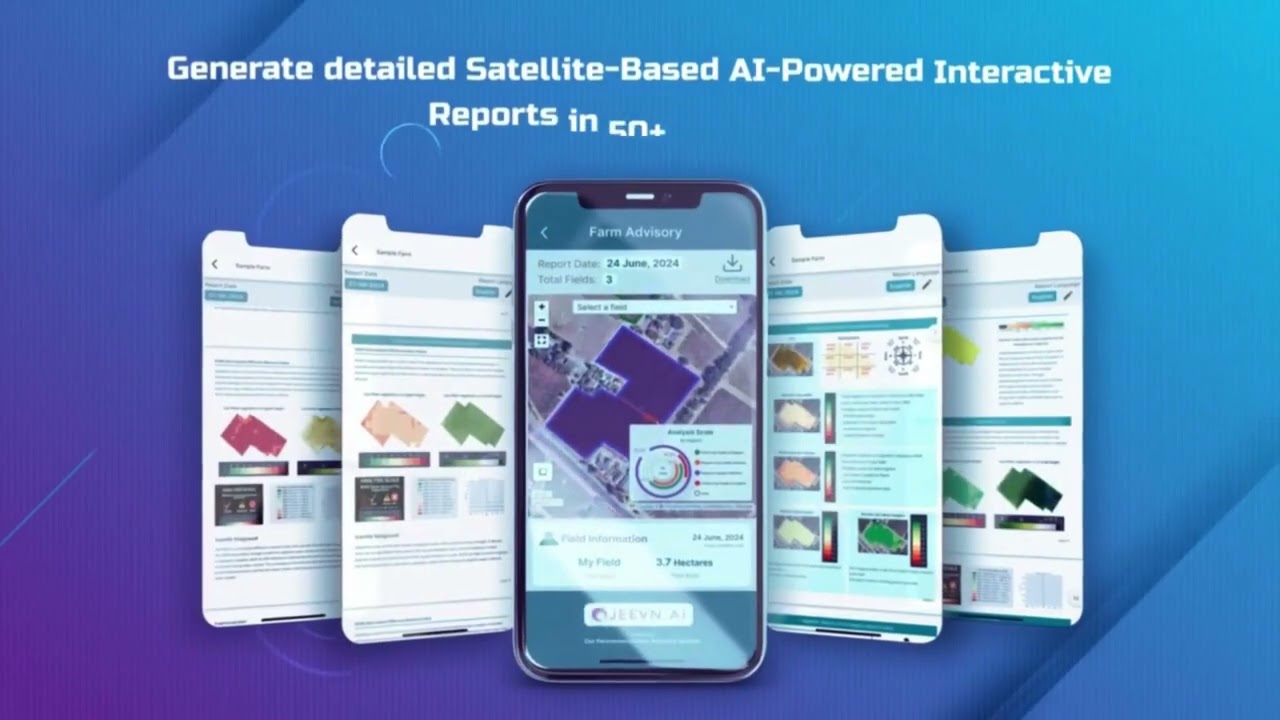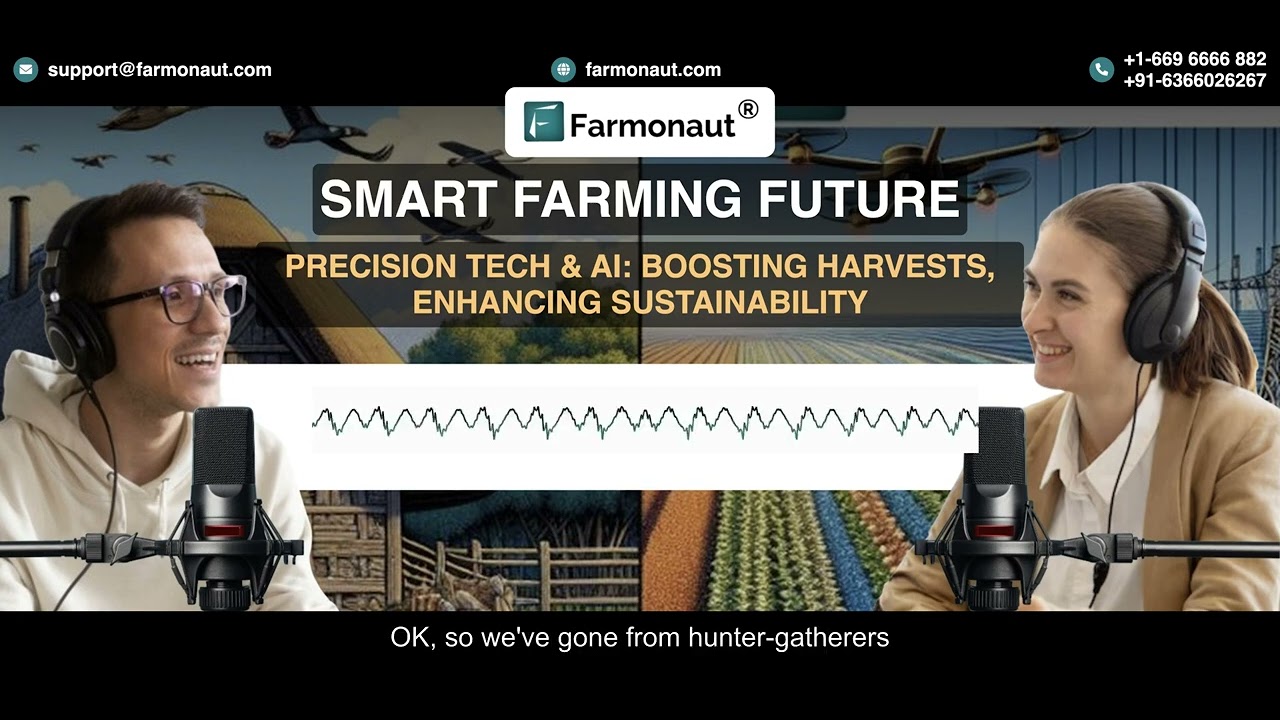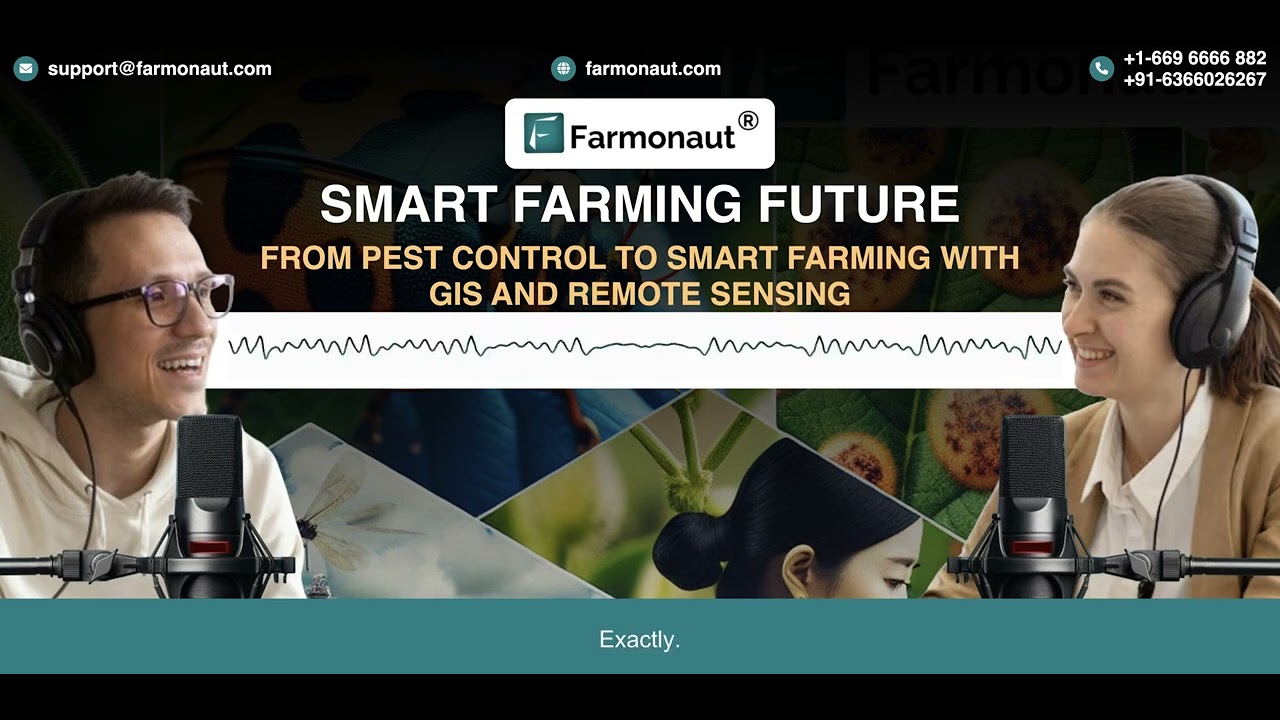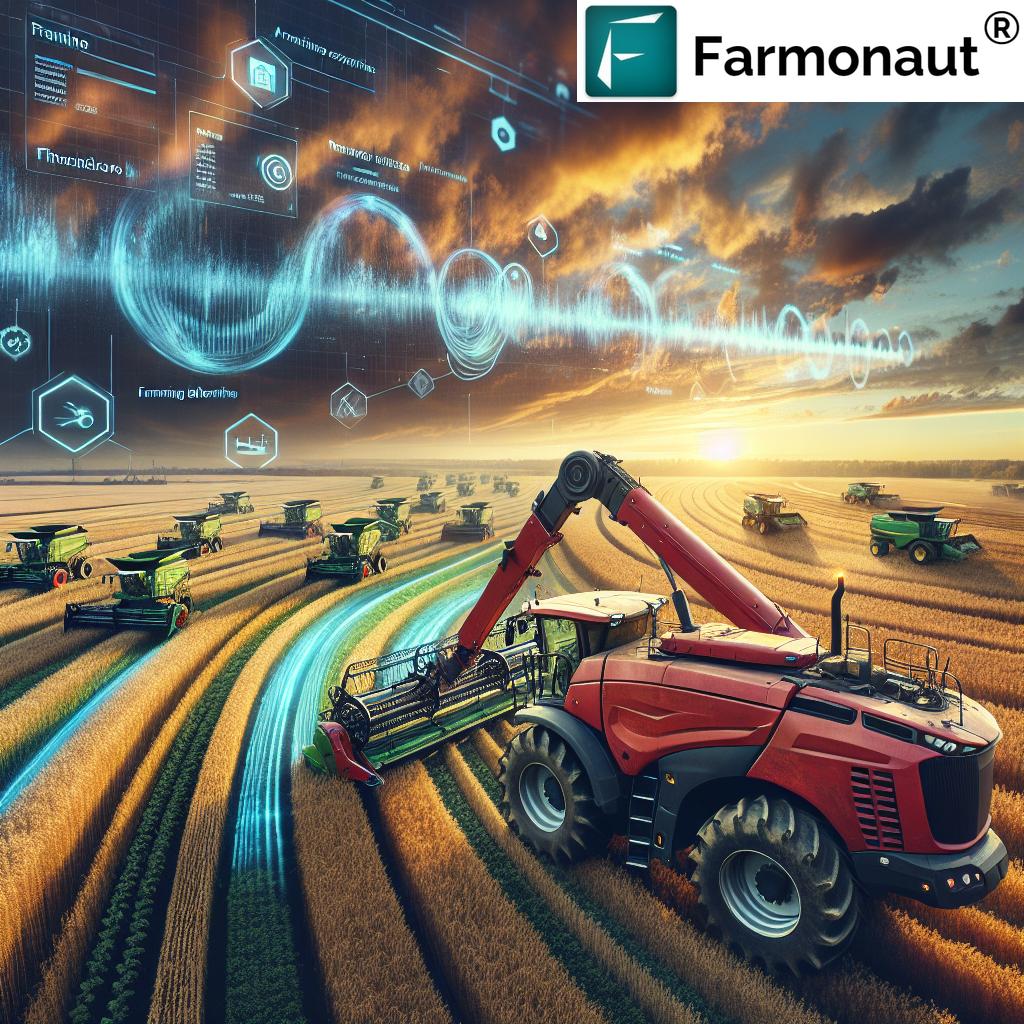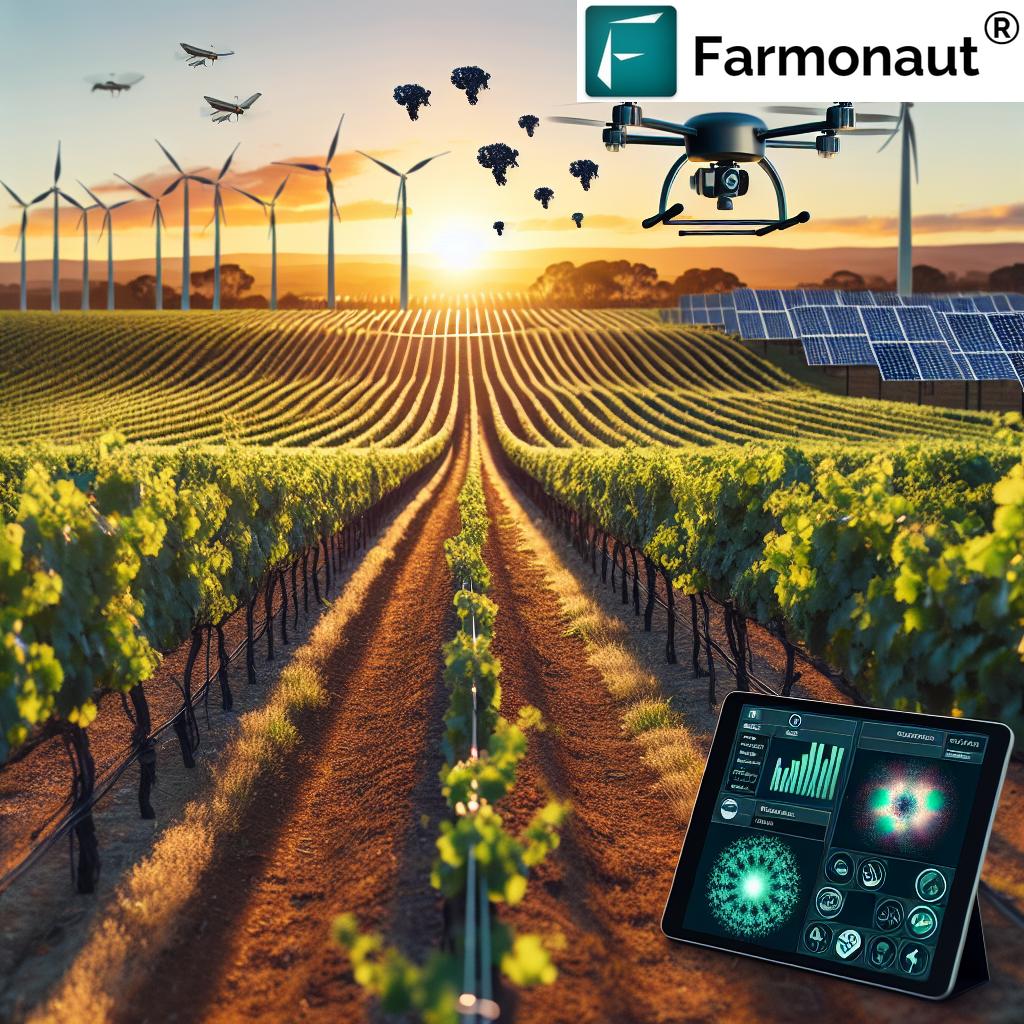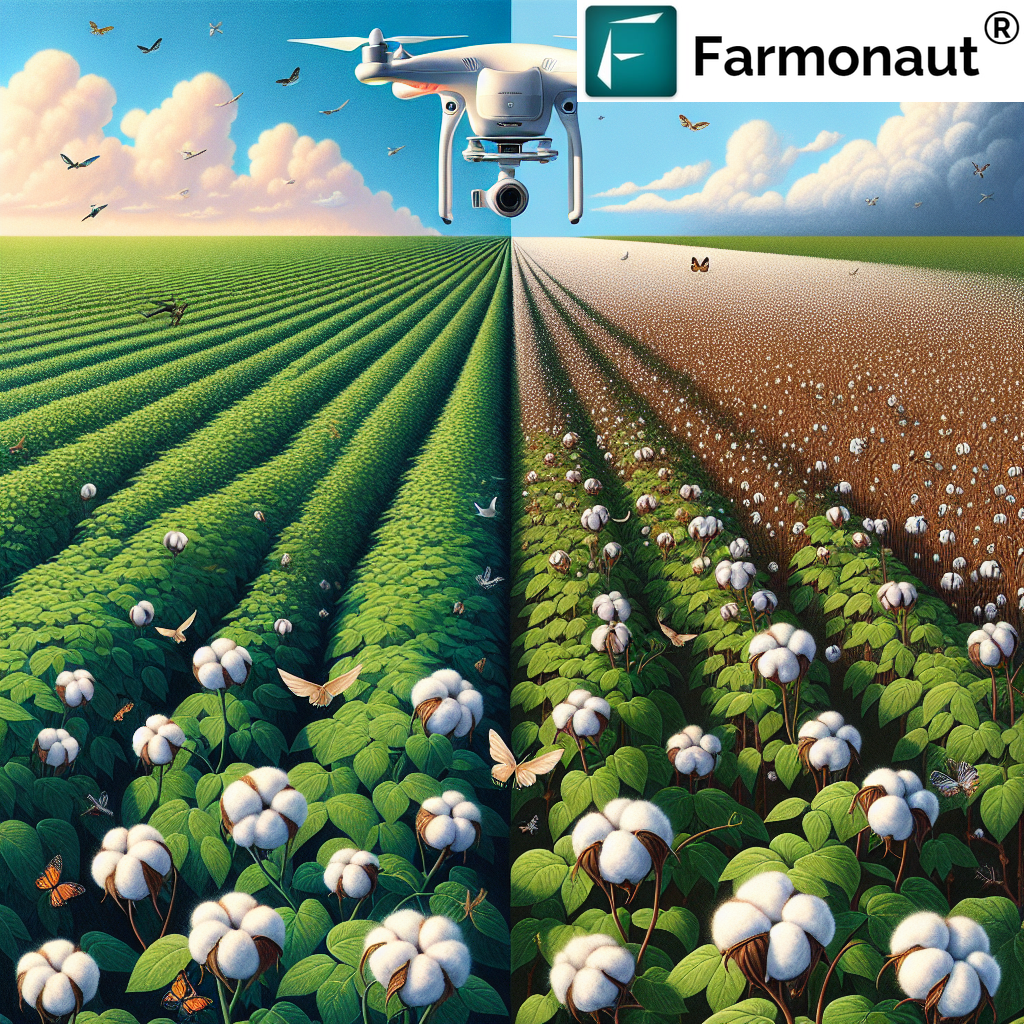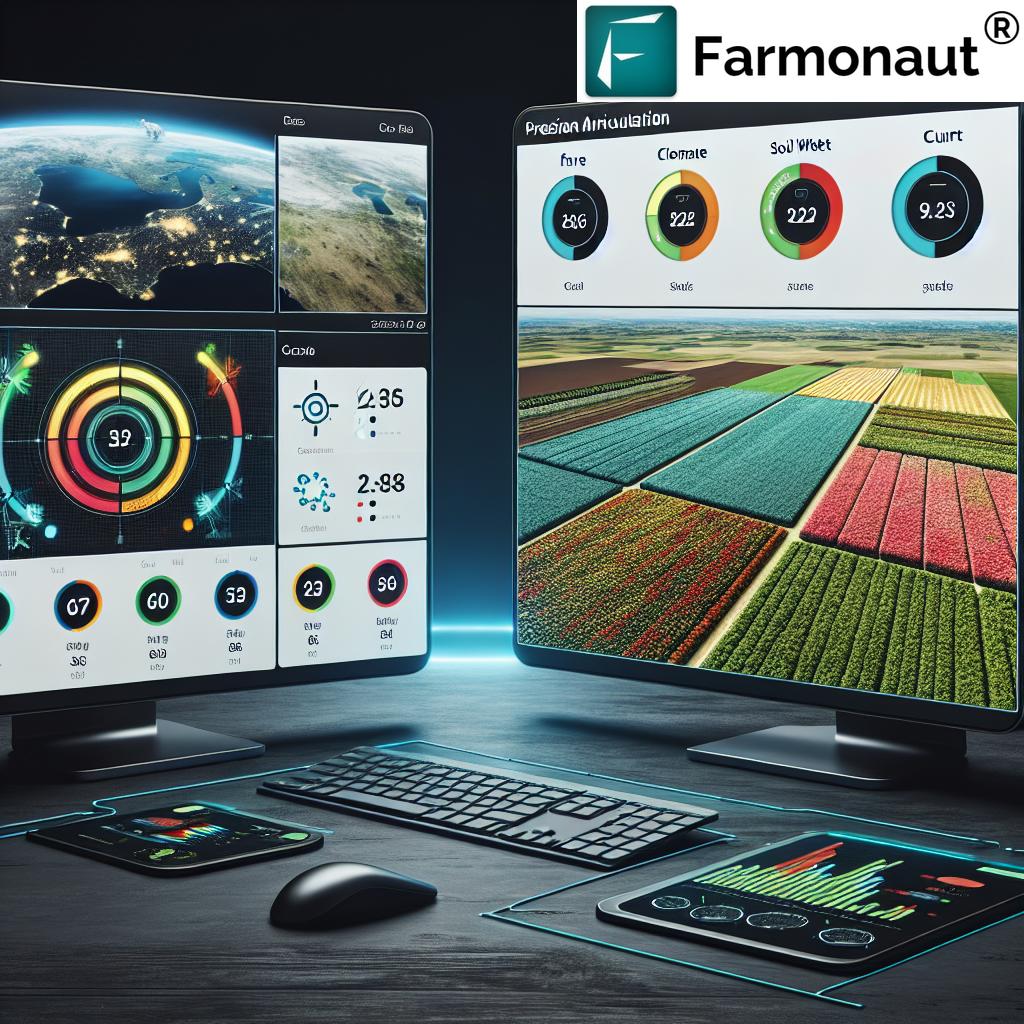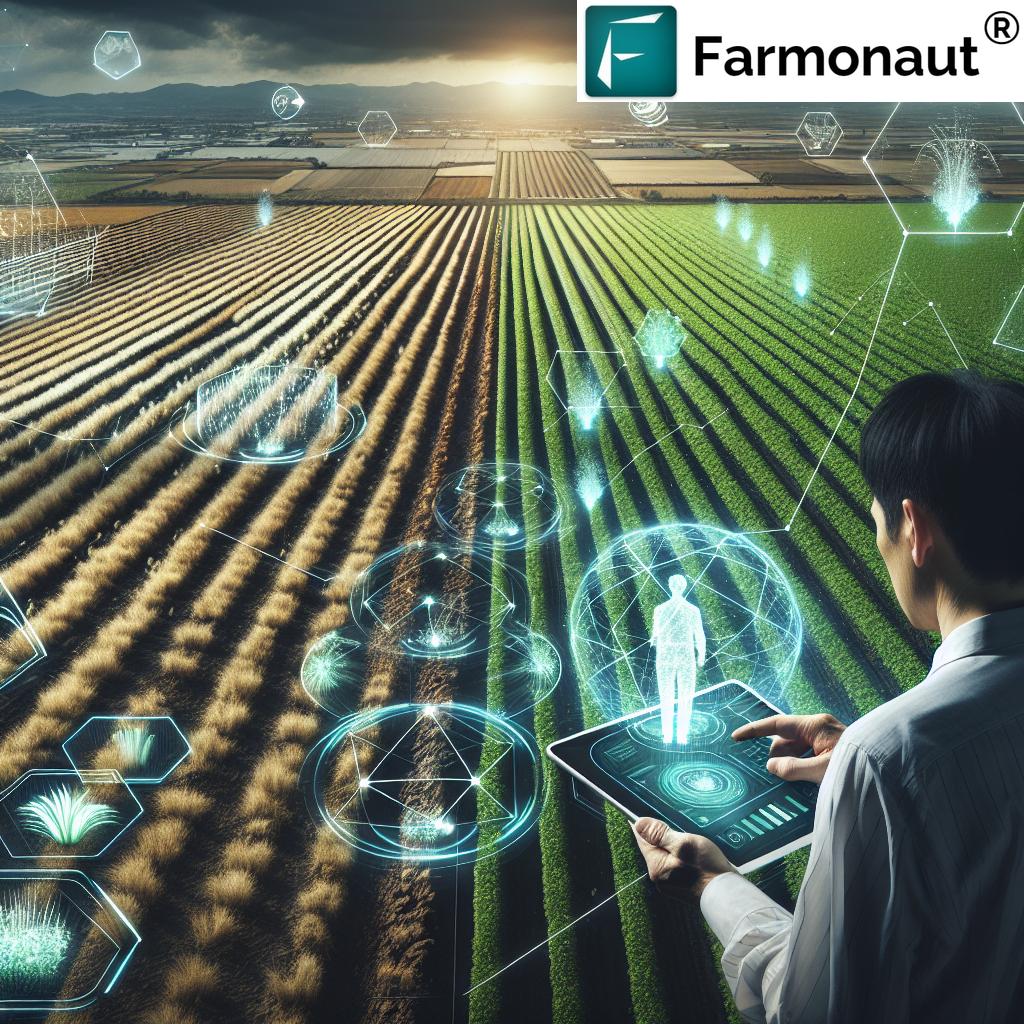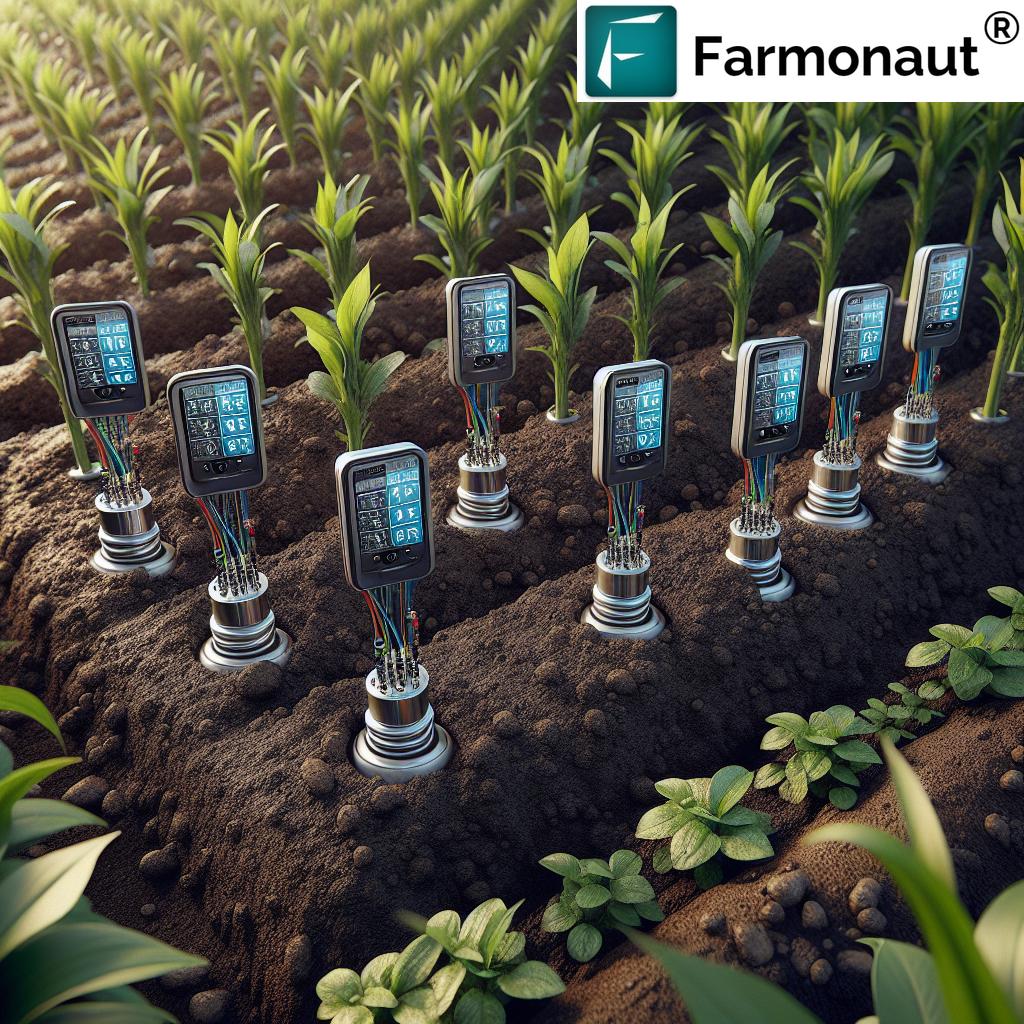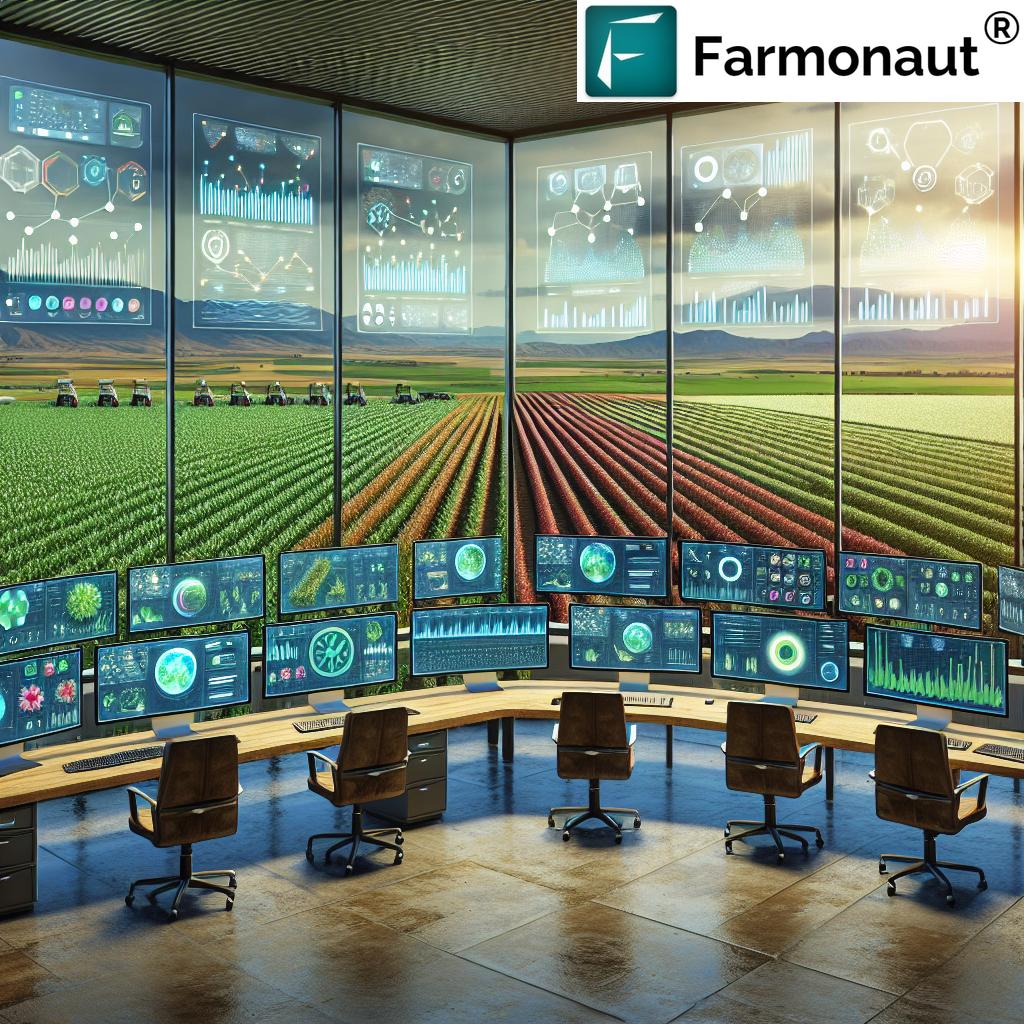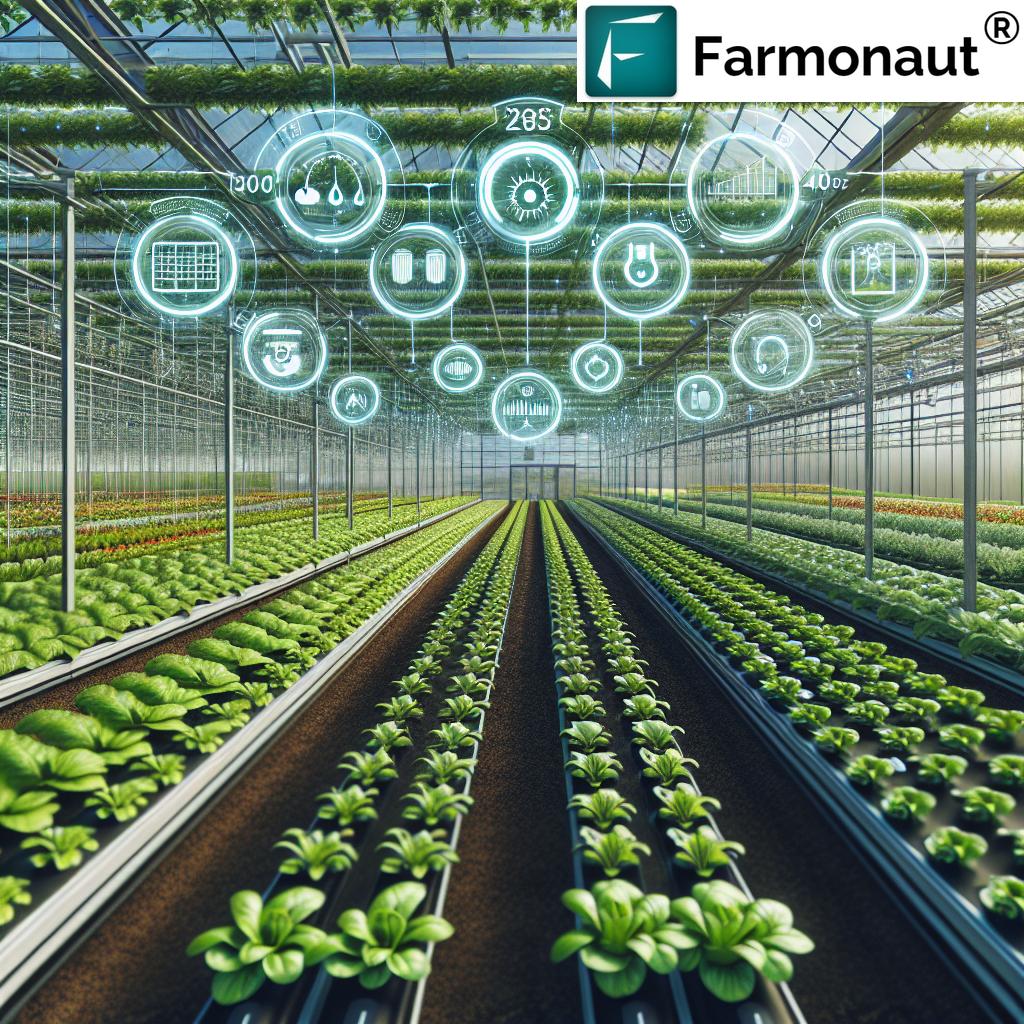Global Positioning System (GPS) Benefits in Agriculture: Transforming Precision Farming in 2025 & Beyond
“Over 70% of large farms worldwide will adopt GPS-guided machinery by 2025, revolutionizing precision agriculture.”
Table of Contents
- Introduction: GPS Technology Revolutionizing Agriculture in 2025
- What is a Major Benefit from Using GPS in the Agricultural Industry?
- Precision Farming: How GPS Technology Boosts Efficiency
- Key Applications of Global Positioning System (GPS) in Modern Agriculture
- Economic and Environmental Benefits of Technology in Agriculture
- Data Collection & Field Management: Integrating GPS and GIS
- Automation, Efficiency, and the Future: The GPS-Enabled Tractor Revolution
- Sustainability in Agriculture: GPS-Driven Water and Soil Resource Management
- Supply Chain, Traceability & Logistics: GPS Beyond the Field
- Satellite Solutions and GPS Integration: Farmonaut for Next-Gen Agriculture
- Comparison Table: Benefits of GPS-Enabled vs Traditional Farming
- Frequently Asked Questions (FAQ): GPS in Agriculture
- Conclusion: Empowering Agriculture for 2025 & Beyond
Introduction: GPS Technology Revolutionizing Agriculture in 2025
The global positioning system (GPS) technology is widely used in the agriculture industry as many tractors are now equipped with this beneficial technology. From reducing resource wastage to enhancing operational efficiency, GPS is a cornerstone among technological advancements that have revolutionized modern farming. As the demand for sustainable food production grows with the world’s rising population, farmers are turning to GPS-integrated solutions for superior accuracy, productivity, and stewardship of resources.
This comprehensive guide explores how GPS—and its integration with other advanced systems—is transforming agriculture for 2025 and beyond. We’ll highlight key applications, major benefits, and the future potential of this transformative tool in the agriculture technology industry.
What is a Major Benefit from Using GPS in the Agricultural Industry?
Modern farming faces immense challenges: maximizing crop yield, conserving natural resources, reducing input costs, and meeting sustainability standards—all while feeding an ever-growing world population. Global positioning system (GPS) technology is widely used in the agriculture industry as many tractors are now equipped with this beneficial technology. What is a major benefit from using GPS in the agricultural industry?
- Precision: GPS enables automated guidance, mapping, and variable rate application of seeds, fertilizers, and pesticides, optimizing every operation.
- Efficiency: By reducing overlap and missed areas, GPS increases yield, saves labor and fuel, and ensures optimal management for each square meter of land.
- Data-Driven Decisions: Integrated GPS and GIS systems empower farmers with real-time information about soil health, crop conditions, and field variability for more precise decisions.
- Sustainability: GPS supports targeted input use, minimizing environmental impact and conserving resources like water—essential for long-term agriculture viability.
As we enter 2025, the adoption of GPS-enabled agriculture is set to further solidify its role in paving the way for sustainable practice and operational excellence.
Precision Farming: How GPS Technology Boosts Efficiency
Precision agriculture is the backbone of modern farming, and GPS is its pulse. The ability to accurately determine exact location within a field lets farmers plan and execute operations in a highly controlled manner—perfect for variable rate application of inputs.
How GPS-Enabled Precision Improves Farming
-
Accurate Field Mapping & Planning:
By equipping tractors with GPS receivers, farmers can create digital field boundaries, plan planting and spraying routes, and streamline crop management. -
Variable Rate Application (VRA):
GPS maps drive variable rate application of seeds, fertilizers, and chemicals. Inputs are delivered only where needed, in the right amounts, directly linked with yield maps and soil data—reducing waste and minimizing environmental impact. -
Reduced Overlap and Missed Areas:
Automated steering and GPS guidance systems ensure precision during planting or harvesting, lowering both input costs and labor demands while delivering optimal field coverage. -
Enhanced Data Collection:
Mapping soil conditions, crop health, and moisture levels enables smart resource allocation—a must in the growing population scenario of 2025.
Together, these applications revolutionize the way activities are conducted on farms, making GPS an indispensable and transformative tool in the agriculture industry technology ecosystem.
Key Applications of Global Positioning System (GPS) in Modern Agriculture
1. Tractor Steering, Guidance, and Fleet Management
GPS technology has become extensively embedded in modern farm equipment. Automated guidance systems enable:
- Straighter, more accurate passes in the field—ensuring no portion is missed or overlapped excessively.
- Reducing operator fatigue and dependency on highly experienced labor, thus addressing the labor shortage challenges in agriculture.
- Enabling fleet management by connecting multiple tractors and implements to a central system for coordinated operations.
Useful Resource: Our Fleet Management tools empower businesses to monitor, schedule, and optimize their machinery—reducing operational costs and maximizing coverage.
2. Automated Planting, Spraying, and Fertilization
Smart tractors and planters equipped with GPS receivers can automate seeding and fertilizer application, adjusting rates according to spatial data, resulting in higher yields and more sustainable use of resources.
3. Yield Mapping and Crop Health Monitoring
Integrated with yield sensors, GPS tracking ensures yield data is mapped spatially so farmers can analyze variability and identify underperforming areas for remedial action.
Global positioning system (GPS) is also essential for satellite-powered platforms such as Farmonaut’s, enabling comprehensive crop health monitoring, NDVI analysis, soil moisture tracking, and AI-driven advisory services for improved resource management.
Economic and Environmental Benefits of Technology in Agriculture
Let’s explore the direct effects of global positioning system (GPS) technology adoption on the bottom line and sustainability metrics in the agriculture technology industry.
A. Cost Savings
- Fuel Consumption: GPS guidance optimizes field routes, reducing unnecessary driving and fuel use.
- Labor Reduction: With automation, one operator can manage more acreage or supervise several machines at once.
- Input Savings: As inputs are applied only where necessary, significant reductions in fertilizer, pesticide, and seed costs are realized.
B. Environmental Sustainability
- Reduced Over-application: Targeted input applications lower risk of nutrient runoff, chemical drift, and minimize environmental impact.
-
Water Conservation: GPS-powered irrigation systems deliver water with precision, vital as water scarcity intensifies in 2025.
Explore: For next-level irrigation management, explore our Large Scale Farm Management solution, supporting satellite-based moisture and resource tracking. - Soil Health & Conservation Tillage: Guided routes reduce compaction, preserve soil structure, and improve long-term field viability.
“GPS technology can reduce fertilizer use in agriculture by up to 15%, enhancing both sustainability and crop yields.”
Data Collection & Field Management: Integrating GPS and GIS
One of the most powerful applications of modern GPS in agriculture lies in data-driven field management. GPS devices, combined with Geographic Information Systems (GIS), enable:
- Creation of detailed field maps showing soil types, crop history, and yield variability.
- Continuous tracking of machinery positions, operational performance, and input application rates in real-time.
- Layering of additional spatial data (e.g., moisture levels, historical crop health) for comprehensive management.
- Empowering farmers with actionable insights—from identifying underperforming zones to maximizing high-yielding areas.
This GIS-based approach is fueling the next phase of growth in the agriculture industry technology sector.
Learn more: Our Carbon Footprinting tools leverage GPS and satellite data to help track and minimize environmental impact—essential for sustainable farming in 2025.
Automation, Efficiency, and the Future: The GPS-Enabled Tractor Revolution
The adoption of automated guidance and GPS-integration in tractors has drastically altered the way activities are conducted in agriculture today. By 2025, we expect the majority of new farm equipment to feature real-time GPS:
- Automated Steering & Headland Turns: Tractors equipped with GPS can steer themselves along pre-determined paths with sub-inch accuracy, freeing operators for supervision and quality control.
- Working at Night or in Poor Visibility: Navigation no longer relies on visual cues, enabling uninterrupted operations and higher annual fieldwork capacity.
- Field Operation Logs: All actions (planting, spraying, fertilizing) are recorded with precise GPS coordinates, simplifying compliance, auditing, and record keeping.
- Labor Efficiency & Safety: Even less-experienced operators can deliver consistently high performance, while automation reduces fatigue-related errors and accidents.
Through these advances, the agriculture technology industry is not just witnessing improved productivity but also addressing critical labor challenges faced by farmers globally.
Sustainability in Agriculture: GPS-Driven Water and Soil Resource Management
As sustainability becomes a defining goal for agriculture in 2025, GPS enables practices that conserve water, protect soils, and lower emissions. Let’s look at the core areas where GPS stands out:
-
Precision Irrigation: GPS-linked irrigation controls deliver the right amount of water to each section, saving water and promoting crop resilience—especially in drought-prone regions.
Fact: With the increasing integration of IoT and satellite data, GPS-guided irrigation management is at the frontier of sustainable farming. - Conservation Tillage: Minimized passes by tractors minimize soil compaction, supporting healthier soil structure, reduced erosion, and increased soil organic matter.
- Environmental Compliance: Data from GPS-enabled systems provide proof of adopting responsible farming methods for regulatory and eco-labeling purposes.
Sustainable agriculture in 2025 goes hand-in-hand with transparent and reliable data.
Enhance supply chain transparency: Our Traceability solutions utilize GPS and blockchain to ensure every crop’s journey is authentic, secure, and accountable.
Supply Chain, Traceability & Logistics: GPS Beyond the Field
The benefits of technology in agriculture extend beyond in-field operations. In 2025, GPS plays a vital role in:
- Post-Harvest Logistics: GPS tracking ensures efficient transport and storage, reducing spoilage and post-harvest losses, while optimizing the route for harvesters and trucks.
-
Chain-of-Custody Verification: By recording location and timestamp during every stage, GPS data supports blockchain-based traceability from farm to shelf—important for food safety, quality, and regulatory compliance.
For end-to-end traceability: See our Product Traceability platform maximizing transparency and trust in agri-supply chains. - Resource Management: GPS-integrated tools help track machinery, inputs, and harvested produce, automating records and improving efficiency at every step.
API Access: Developers and enterprises can programmatically access our GPS, satellite, and weather data using the Farmonaut API and review the documentation at API Developer Docs to build custom solutions and dashboards.
Satellite Solutions and GPS Integration: Farmonaut for Next-Gen Agriculture
As a pioneering satellite technology company, we at Farmonaut are passionate about making advanced GPS and satellite-driven insights accessible and affordable to every stakeholder in the agriculture ecosystem. Our platform leverages the integration of:
- Multispectral Satellite Imagery: For real-time crop and soil health monitoring, field variability analysis, and early detection of crop stress.
- AI-Advisory Systems: Our Jeevn system analyzes GPS and satellite data to deliver actionable guidance, weather forecasts, and field-specific recommendations.
- Blockchain Traceability: For ensuring product authenticity and transparency for consumers and supply chain participants.
- Fleet & Resource Management: Integrated GPS and telematics for smart asset tracking, reducing operational expenses, and maximizing farm productivity.
- Environmental Impact Monitoring: Supporting regulatory compliance and eco-friendly practices by measuring and optimizing carbon footprints.
Our approach aligns with the industry’s move towards sustainability, transparency, and high-efficiency farming—empowering individual users, businesses, governments, and financial institutions alike.
Comparison Table: Benefits of GPS-Enabled vs Traditional Farming
To illustrate the tangible benefits of technology in the agriculture industry, see the estimated improvements realized through GPS adoption, based on industry-average values:
| Agricultural Metric | Traditional Farming (Estimated Values) |
GPS-Enabled Farming (Estimated Values) |
|---|---|---|
| Fuel Consumption (liters/hectare) | 25 | 18 |
| Field Coverage Accuracy (%) | 85 | 98+ |
| Time Saved (hours/season) | 200 | 80 |
| Crop Yield (tons/hectare) | 6.5 | 7.3 |
| Input Costs (USD/hectare) | 450 | 380 |
These figures highlight that GPS-enabled farming offers remarkable gains in efficiency, accuracy, savings, and sustainable output. This is why global positioning system (GPS) technology is widely used in the agriculture industry as many tractors are now equipped with this beneficial technology.
Need advanced, satellite-driven crop advisory for your plantation? Our Crop Plantation & Forest Advisory leverages both GPS and satellite data to optimize plantation health and yield.
Frequently Asked Questions (FAQ): GPS in Agriculture
What is a major benefit from using GPS in the agricultural industry?
The primary benefit is precision—allowing site-specific application of seeds, inputs, and water. This increases efficiency, minimizes resource waste, and boosts crop yields while reducing environmental footprint.
How does GPS technology improve farming efficiency?
GPS guidance prevents overlap in planting and input application, saves labor and time, and enables automation of fieldwork—ultimately lowering input costs and enhancing operational productivity.
Can GPS use in agriculture contribute to sustainability?
Yes. By optimizing the use of fertilizers, pesticides, and water, GPS-based systems directly promote sustainable agricultural practices, helping conserve resources and protect ecosystems.
What types of equipment can GPS be integrated with in agriculture?
GPS is used in tractors, planters, sprayers, harvesters, irrigation systems, and even drones and unmanned vehicles. Most new farm machinery comes “GPS-ready” as of 2025.
Are GPS-based solutions affordable to small and medium farmers?
Accessibility has improved greatly due to platforms like Farmonaut, offering cost-effective satellite and GPS-driven advisory via mobile and web apps.
How does GPS support supply chain traceability in 2025?
GPS records the exact position and timing of farm products through their journey, integrating with blockchain for tamper-proof traceability and transparent supply chains.
Where can I access Farmonaut’s GPS and satellite-powered solutions?
Get started via the Farmonaut Web & Mobile App, Android app, or iOS app.
Conclusion: Empowering Agriculture for 2025 & Beyond
Global positioning system (GPS) technology is widely used in the agriculture industry because it delivers precision, efficiency, sustainability, and superior management to modern farming. From tractors to satellites, GPS is a transformative, indispensable tool that addresses the critical challenges of feeding a growing population.
As the agriculture technology industry evolves, the integration of GPS with AI, IoT, and satellite monitoring—as offered by Farmonaut—unlocks even greater possibilities.
Modern farmers and businesses can now:
- Optimize input usage with variable rate applications
- Achieve higher, more sustainable crop yields
- Reduce costs, save labor, and meet stringent sustainability standards
- Benefit from transparency, traceability, and intelligent resource management—across the entire supply chain
Accelerate your digital farming transformation in 2025 and beyond—explore GPS and satellite-powered agriculture today. Start with Farmonaut’s affordable, scalable platform for a smarter, more sustainable future.





